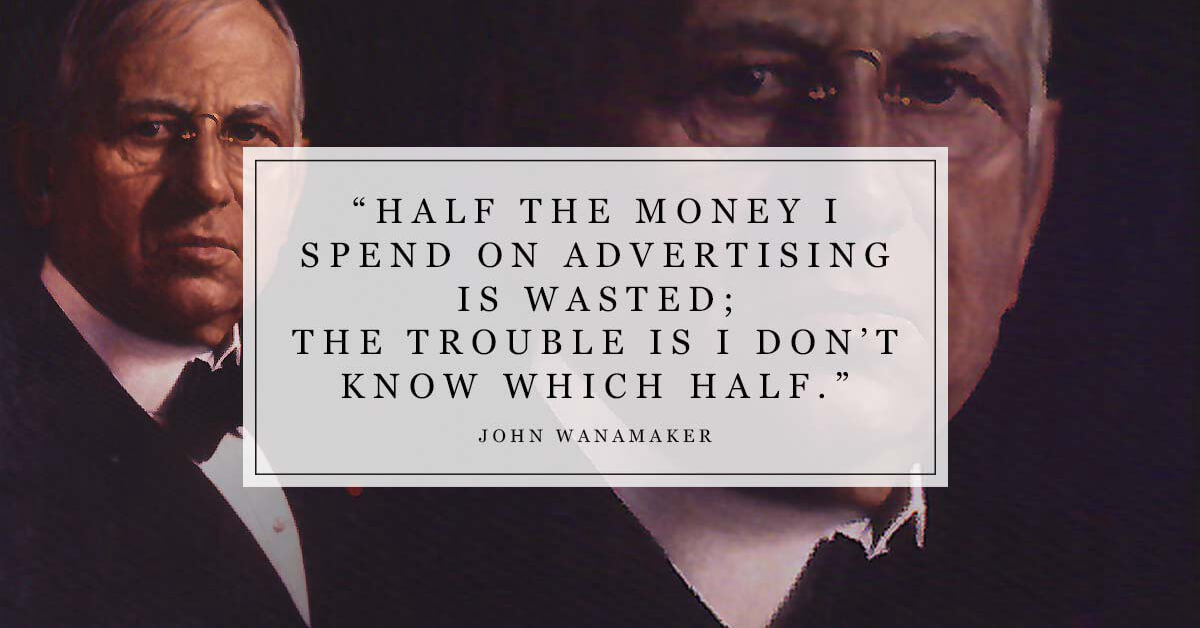Which promotions pay off?

That old maxim that half of the money spent on advertising is thrown away, and we don’t know which half it is, probably still holds true. At least in most types of business. Even if we aren’t doing dumb things—technology has raised the level of transparency somewhat, but we still can’t avoid the issue of which and how much of which promotions will pay off. Appearing at trade fairs has its good points, as does investing in branding. I never thought that I’d write something like this, but...
Are you really in the blue part of the ocean or does it just seem like that to you?
In my opinion, most of the trouble companies face when they invest in promotional activities comes from not understanding the difference between advertising within a category and promoting the category itself and misjudging when their business is in the blue or red part of the ocean. If an “ignorant” customer is unable to recognize your uniqueness and they equate you with the multitude of other similar providers, you’re swimming deep in the red ocean until you succeed in communicating this. As long as you’re in the red, the only thing that counts is the effectiveness you are able to provide in the competitive marketplace.
What do you expect when you’re on Facebook, what are you seeking on Google, and when do you go on Amazon?
Advertising content that requires a customer in the “awareness” phase of the purchasing process is disastrous if you’re in the red ocean, and this money is probably mostly thrown away. If we think that customers look for inspiration on Facebook to understand their problems, use Google to find information about differences between various products, and use Amazon (or price comparison sites such as Ceneje.si) to find the lowest price for a particular product, the probability that we’re going to make a catastrophic mistake is quite a bit smaller. When your business is swimming strongly in the red part of the ocean, investing in promoting the category would be foolish. In this case, advertising makes a lot more sense for those at the bottom of the funnel, whereas you will compete on price, delivery options, and other indicators that represent better performance than that offered by your competitors. A few days ago I tried to explain this to my wife, who is a doctor. I experienced a real aha moment only when we touched upon a concrete example.
A simple example to understand the theory.
Right before the coronavirus crisis my wife and I went to Portugal. We landed in Porto and after six days of traveling around, returned to Porto, from where we flew back home a few hours later (not through Italy!) because of the crisis. During both short visits to Porto we coincidentally went to the same restaurant. Well, maybe it wasn’t a coincidence at all. During our first visit, it was the only restaurant on Praça da Ribeira that was open, and then during our second visit there was a young man with the daily menu in his hand a few dozen meters from the restaurant. He invited us in a friendly and cheerful way to visit. He proudly accompanied us to our table, seated us, and looked happily at his boss, who gave him the signal that he’d noticed his success and was thanking him with a gesture.
This story isn’t heading in the direction where I describe our experience in the restaurant and discuss Portuguese cuisine and wine. Maybe some other time. I want to reveal what my wife and I talked about as we sat at that table. I asked her who deserved credit for us choosing precisely that restaurant. Just like a shot from a cannon, she pointed at the young man, who was already on the prowl for his next “victim.”
“But would we have even come to Praça da Ribeira at all if we hadn’t read on TripAdvisor that it’s like the central square of Porto and that the restaurants here stay open late into the night?” I asked.
“We wouldn’t even have come to Porto at all if we hadn’t walked the Camino along the Portuguese coastal route.”
“Precisely, and also if the Portuguese tourist organization hadn’t invested in building the coastal route and promoting it some years ago, and if walking the Camino hadn’t been a well-branded tourism product for the past hundred years.”
We quickly determined that any euro invested in promotion designed to bring in guests to this restaurant who weren’t already at this destination was most likely wasted.
Because Portugal had taken the opportunity to lean on its successful brand and the hype associated with it, they invested their tourism euros in a product that can be very easily based on the existing Camino hype. This brings new tourists into Portuguese cities, where operators more or less successfully seek out their opportunities on that basis in their local environment. They do this through digital channels by placing content in various guides (in our specific case TripAdvisor) and geolocation-dependent digital ads, and in the physical world with direct addresses on the street and referrals among different providers (discount coupons). Any other type of promotion simply doesn’t pay off for them.
Ana Roš’s Hiša Franko (blue ocean) is an entirely different story. Nobody ever goes there by accident. She herself is the reason that foodies from all around the world go to Kobarid. Next time we can say a bit about what promotion opportunities you have if you’re in the blue part of the ocean.
P.S. If you’re interested in how my wife and I spent our vacation, which was sadly cut short by half, I’ve posted six short videos that we put together for our children here. And if you ask me how difficult it is to walk the Camino, I can tell you that editing these videos on my phone every evening was quite a bit more tiring than walking barely 30 km per day.
.jpeg)

